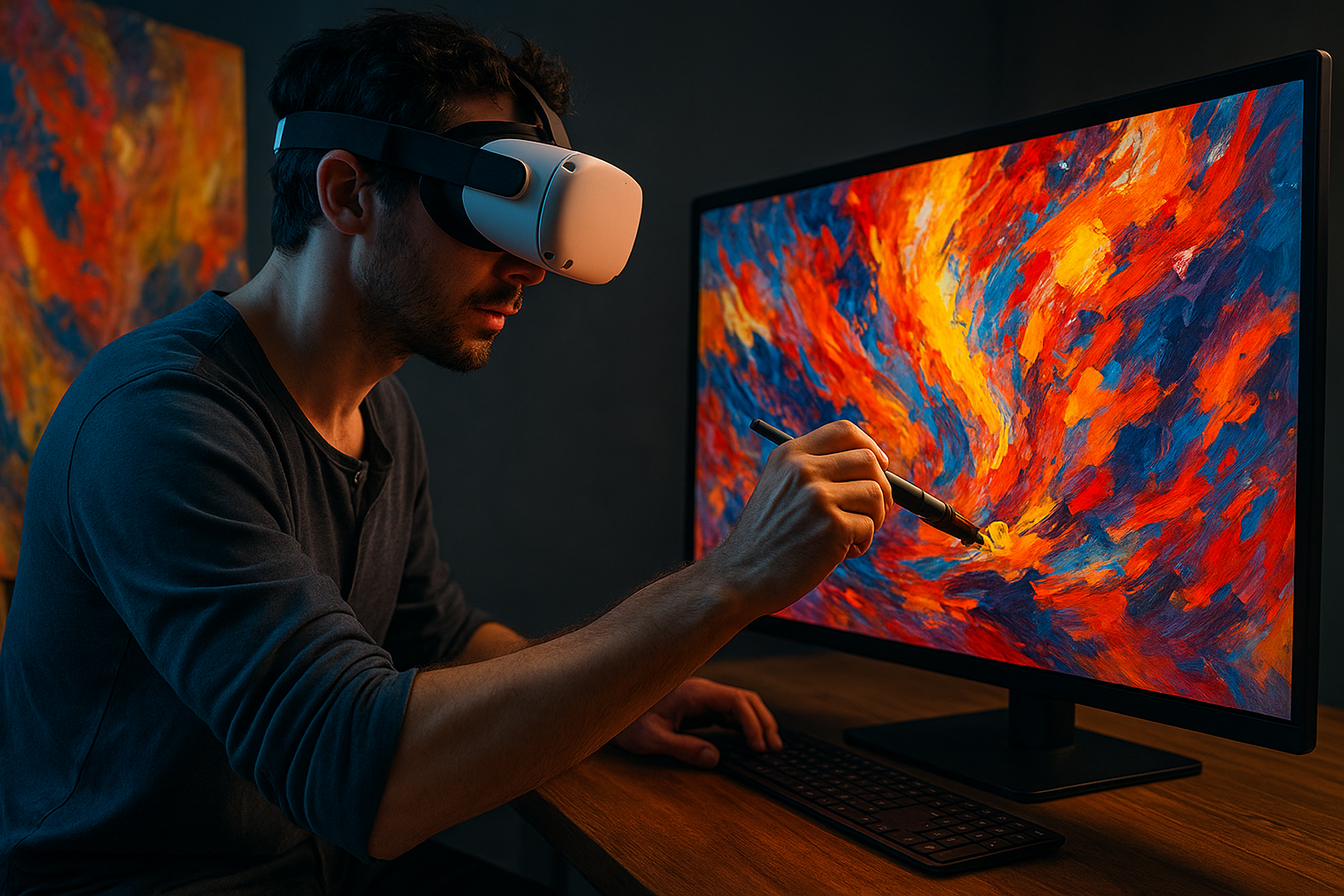A New Dawn for Abstract Expressionism in Digital Age
In the bustling intersection of art and technology, a fresh resurgence of Abstract Expressionism is taking root. This artistic movement, known for its explosive emotion and non-representational aesthetics, is finding new life in the digital realm, challenging traditional concepts and transforming our relationship with art.

The Genesis of Abstract Expressionism
Born out of the post-World War II era, Abstract Expressionism was a radical departure from traditional forms of art. Artists like Jackson Pollock and Mark Rothko championed this movement, using non-representational painting techniques to convey emotions and ideas. These artists rejected the notion that art should depict the physical world, choosing instead to explore the realm of abstract thought and emotion.
The Digital Rebirth of Abstract Expressionism
Fast forward to the modern era, where technology has become a vital part of everyday life. Digital tools offer artists a new medium to express their creativity. The rise of digital art has seen the Abstract Expressionism movement reimagined, with artists taking advantage of digital platforms to create vibrant, immersive pieces that push boundaries and challenge the viewer’s perception.
The Impact of Digital Abstract Expressionism
This digital resurgence of Abstract Expressionism has significant implications for the art world. It is democratizing the creation and appreciation of art, making it more accessible to a broader audience. It is also sparking a renewed interest in the Abstract Expressionist movement, inspiring new generations of artists to explore this style. Moreover, it is challenging traditional notions of what constitutes art, as these digital creations blur the lines between the tangible and virtual.
Current Developments in the Field
The digital art world is buzzing with innovative developments, pushing the boundaries of Abstract Expressionism. For instance, the use of augmented reality (AR) and virtual reality (VR) is transforming the viewer’s experience, allowing them to interact with art in ways previously unimaginable. Artists are also experimenting with artificial intelligence (AI) to create abstract expressionist pieces, bringing a new level of complexity and depth to their work.
The Future of Abstract Expressionism in the Digital Age
As technology continues to evolve, the possibilities for digital abstract expressionism are endless. With tools like AR, VR, and AI, artists will continue to push the boundaries of the genre, creating immersive, interactive experiences that challenge our perceptions and engage our emotions in profound new ways.
In conclusion, the digital age is ushering in a new era for Abstract Expressionism, transforming it from a historic art movement into a vibrant, evolving art form that continues to challenge, inspire, and captivate. It is a testament to the enduring power of this movement and the boundless creativity of artists who continue to push the envelope of artistic expression.




